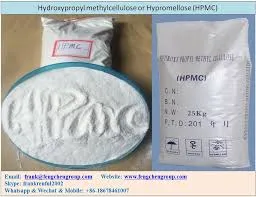
Sep . 05, 2024 17:20 Back to list
High-Performance HPMC
Understanding HPMC A Key Material in Various Applications
Hydroxypropyl Methylcellulose (HPMC) is a versatile polymer that plays a crucial role in a variety of fields, particularly in pharmaceuticals, construction, and food industries. As a cellulose derivative, HPMC is synthesized by modifying cellulose to enhance its functional properties, making it an essential compound for various applications.
.
In addition to pharmaceuticals, HPMC is extensively employed in the construction industry. It serves as a thickening and water-retention agent in cement-based formulations, including mortars and adhesives. When mixed with water, HPMC creates a gel-like consistency that increases the viscosity of the mixture, allowing for better application on surfaces. Its water-retention properties are particularly beneficial, as they allow for prolonged working times and improved adhesion, leading to stronger and more durable constructions.
แผ่น hpmc

Furthermore, HPMC finds its use in the food industry. It acts as a food additive, providing texture and stability to various food products. For example, HPMC can be found in baked goods, where it improves moisture retention and shelf life. It is also used in gluten-free products to enhance texture and mimic the properties of gluten, allowing for a better eating experience without compromising the quality of the food.
The versatility of HPMC extends beyond these industries; it also has cosmetic applications. In personal care products, HPMC is utilized as a thickener and emulsifier. It helps to stabilize emulsions in lotions and creams, ensuring a smooth and consistent product that is easy to apply. Additionally, HPMC is recognized for its skin-friendly properties, making it a preferred ingredient in many formulations.
Safety is another important aspect of HPMC. It is considered non-toxic and biodegradable, which aligns with the growing trend towards sustainability in product formulation. As consumers become more environmentally conscious, the demand for safe and sustainable materials like HPMC is on the rise.
In conclusion, Hydroxypropyl Methylcellulose (HPMC) has emerged as a critical material in various industries due to its unique properties and functionalities. From enhancing drug formulations to improving construction materials and providing texture in food products, HPMC's versatility is unmatched. As research and development continue to advance, we can expect even broader applications for HPMC in the future, solidifying its significance in modern manufacturing and product development. The ongoing exploration of this cellulose derivative will likely open new avenues for innovation, ultimately benefiting numerous industries and consumers alike.
-
Versatile Hpmc Uses in Different Industries
NewsJun.19,2025
-
Redispersible Powder's Role in Enhancing Durability of Construction Products
NewsJun.19,2025
-
Hydroxyethyl Cellulose Applications Driving Green Industrial Processes
NewsJun.19,2025
-
Exploring Different Redispersible Polymer Powder
NewsJun.19,2025
-
Choosing the Right Mortar Bonding Agent
NewsJun.19,2025
-
Applications and Significance of China Hpmc in Modern Industries
NewsJun.19,2025







